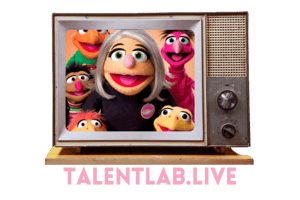Podcast
Questions and Answers
What is the primary distinction between emotions and moods?
What is the primary distinction between emotions and moods?
Emotions are short-lived feelings tied to specific events, while moods are more prolonged emotional states without a clear cause.
How do personality traits influence emotional experiences?
How do personality traits influence emotional experiences?
Personality traits can determine the intensity with which individuals experience emotions, a concept known as affect intensity.
Which day of the week is generally associated with increased happiness?
Which day of the week is generally associated with increased happiness?
Happiness tends to increase toward the end of the week.
Describe the role of stress in influencing moods.
Describe the role of stress in influencing moods.
What common pattern is observed regarding emotions at different times of the day?
What common pattern is observed regarding emotions at different times of the day?
What effect does weather have on emotions, according to the information provided?
What effect does weather have on emotions, according to the information provided?
How do social activities contribute to emotional well-being?
How do social activities contribute to emotional well-being?
Why might shared moral emotions affect ethical decision-making?
Why might shared moral emotions affect ethical decision-making?
How does poor sleep quality affect emotions?
How does poor sleep quality affect emotions?
What effect does exercise have on mood, particularly in depressed individuals?
What effect does exercise have on mood, particularly in depressed individuals?
In what way does age influence the emotional focus of individuals?
In what way does age influence the emotional focus of individuals?
How do emotional expressiveness and intensity differ between women and men?
How do emotional expressiveness and intensity differ between women and men?
What is emotional labor and how does it manifest in the workplace?
What is emotional labor and how does it manifest in the workplace?
What are the two types of acting involved in emotional labor?
What are the two types of acting involved in emotional labor?
What is emotional dissonance and its potential consequences in the workplace?
What is emotional dissonance and its potential consequences in the workplace?
What does Affective Events Theory (AET) describe about workplace emotions?
What does Affective Events Theory (AET) describe about workplace emotions?
How can positive displays of emotion by employees influence customer interactions?
How can positive displays of emotion by employees influence customer interactions?
What role do emotions and moods play in predicting coworker behavior?
What role do emotions and moods play in predicting coworker behavior?
Why is it important for service sector managers to understand emotional displays?
Why is it important for service sector managers to understand emotional displays?
In what way can emotional awareness improve workplace dynamics?
In what way can emotional awareness improve workplace dynamics?
How should managers react to emotional cues from their employees?
How should managers react to emotional cues from their employees?
What is emotional intelligence and why is it important in the workplace?
What is emotional intelligence and why is it important in the workplace?
List and briefly explain two techniques for emotion regulation.
List and briefly explain two techniques for emotion regulation.
How can diversity in work groups aid emotion regulation?
How can diversity in work groups aid emotion regulation?
Why should emotional intelligence be considered during the hiring process?
Why should emotional intelligence be considered during the hiring process?
What impact do positive emotions have on decision-making?
What impact do positive emotions have on decision-making?
What is mindfulness in the context of emotion regulation?
What is mindfulness in the context of emotion regulation?
Describe the concept of deep acting and its relevance in emotional regulation.
Describe the concept of deep acting and its relevance in emotional regulation.
Explain how recruiting positive-minded individuals can benefit an organization.
Explain how recruiting positive-minded individuals can benefit an organization.
What is the key difference between emotions and moods?
What is the key difference between emotions and moods?
List two sources of emotions and moods.
List two sources of emotions and moods.
What is emotional labor, and how does it impact employees?
What is emotional labor, and how does it impact employees?
Briefly explain affective events theory.
Briefly explain affective events theory.
Define emotional intelligence.
Define emotional intelligence.
Mention one strategy for emotion regulation.
Mention one strategy for emotion regulation.
How can emotions and moods impact organizational behavior issues?
How can emotions and moods impact organizational behavior issues?
Identify two universal emotions.
Identify two universal emotions.
Flashcards are hidden until you start studying
Study Notes
Emotions and Moods
- Emotions are short-lived, intense feelings tied to a specific cause, while moods are more enduring, less intense, and diffuse emotional states.
- Six universal emotions: anger, fear, sadness, happiness, disgust, and surprise.
- Moral emotions arise from judgments about morality, learned in childhood, and vary across cultures.
Sources of Emotions and Moods
- Personality influences mood; individuals differ in emotional intensity.
- Time of day affects emotions, with peak happiness occurring mid-day.
- Happiness increases towards the end of the week.
- Stress, even at low levels, can negatively impact moods.
- Engagement in social activities tends to uplift mood.
- Poor sleep correlates with increased negative emotions.
- Exercise can enhance mood, particularly in those with depression.
- Older individuals generally focus on positive experiences.
- Women often express emotions more intensely and frequently than men.
Emotional Labor
- Emotional labor involves managing emotional expressions to meet organizational expectations during interactions.
- Felt emotions are genuine, while displayed emotions are socially expected.
- Surface acting entails suppressing true feelings, whereas deep acting modifies one's inner feelings in alignment with expectations.
- Emotional dissonance occurs when felt emotions conflict with displayed emotions, linked to job burnout and decreased job satisfaction.
Affective Events Theory
- Affective Events Theory posits that employees respond emotionally to workplace incidents, impacting their performance and satisfaction.
- Emotional responses to seemingly minor events can accumulate and affect overall job experiences.
Emotional Intelligence
- Emotional intelligence encompasses the ability to perceive and understand emotions in oneself and others and to regulate emotions effectively.
- A cascading model illustrates how emotional intelligence affects interpersonal relations and decision-making.
Strategies for Emotion Regulation
- Emotion regulation involves identifying and altering one's emotional responses.
- Effective regulation can be enhanced in diverse workgroups.
- Techniques include surface acting, deep acting, emotional suppression, cognitive reappraisal, social sharing, and mindfulness.
- Recruiting individuals with positive mindsets, coupled with training for leaders, improves mood and effectiveness.
Applications to Organizational Behavior
- Emotional intelligence should be considered in hiring, especially for roles requiring social interaction.
- Positive emotions correlate with enhanced decision-making ability.
- A positive mood fosters creativity, flexibility, and openness in the workplace.
- Encouraging positive emotional displays among service employees can enhance customer interactions and satisfaction.
Studying That Suits You
Use AI to generate personalized quizzes and flashcards to suit your learning preferences.




